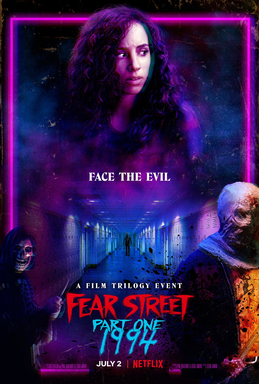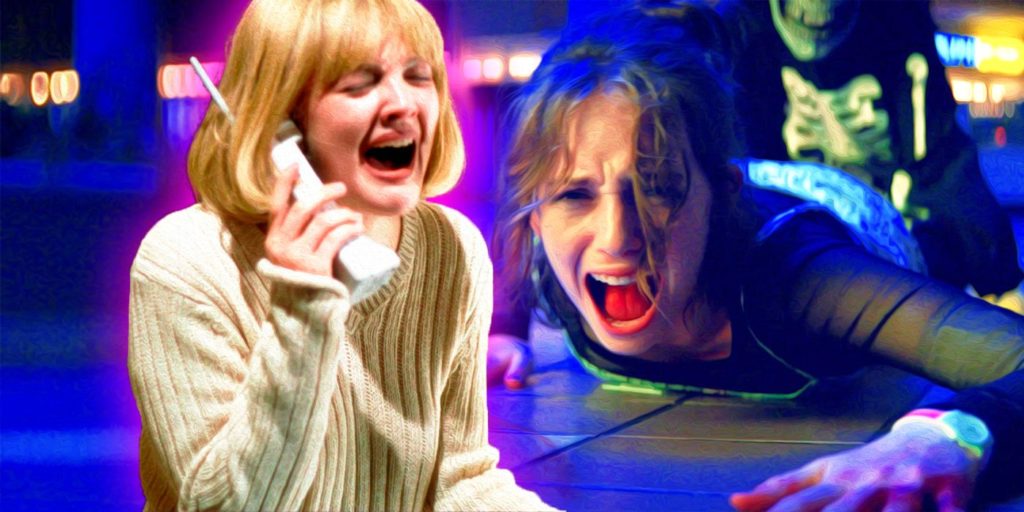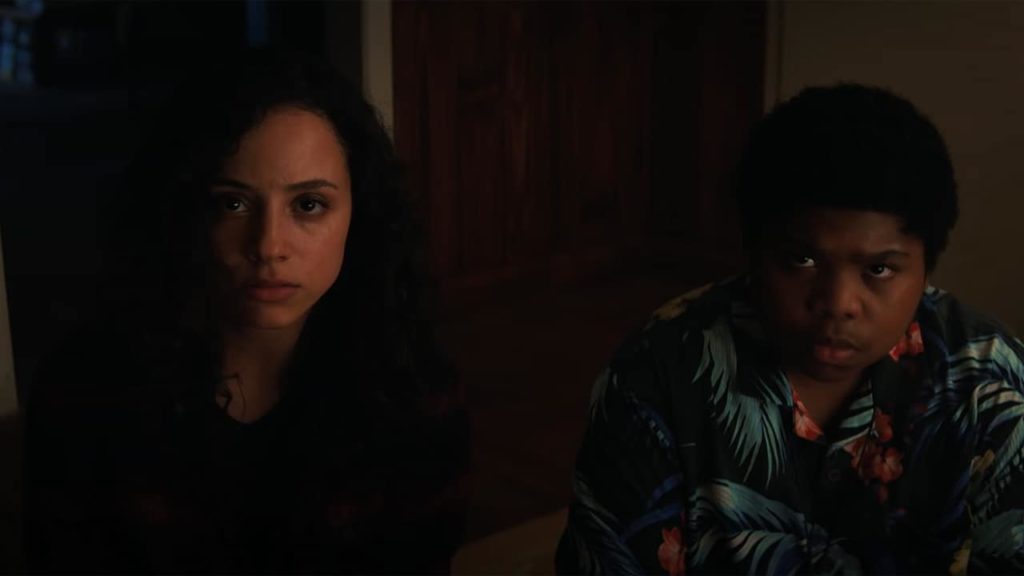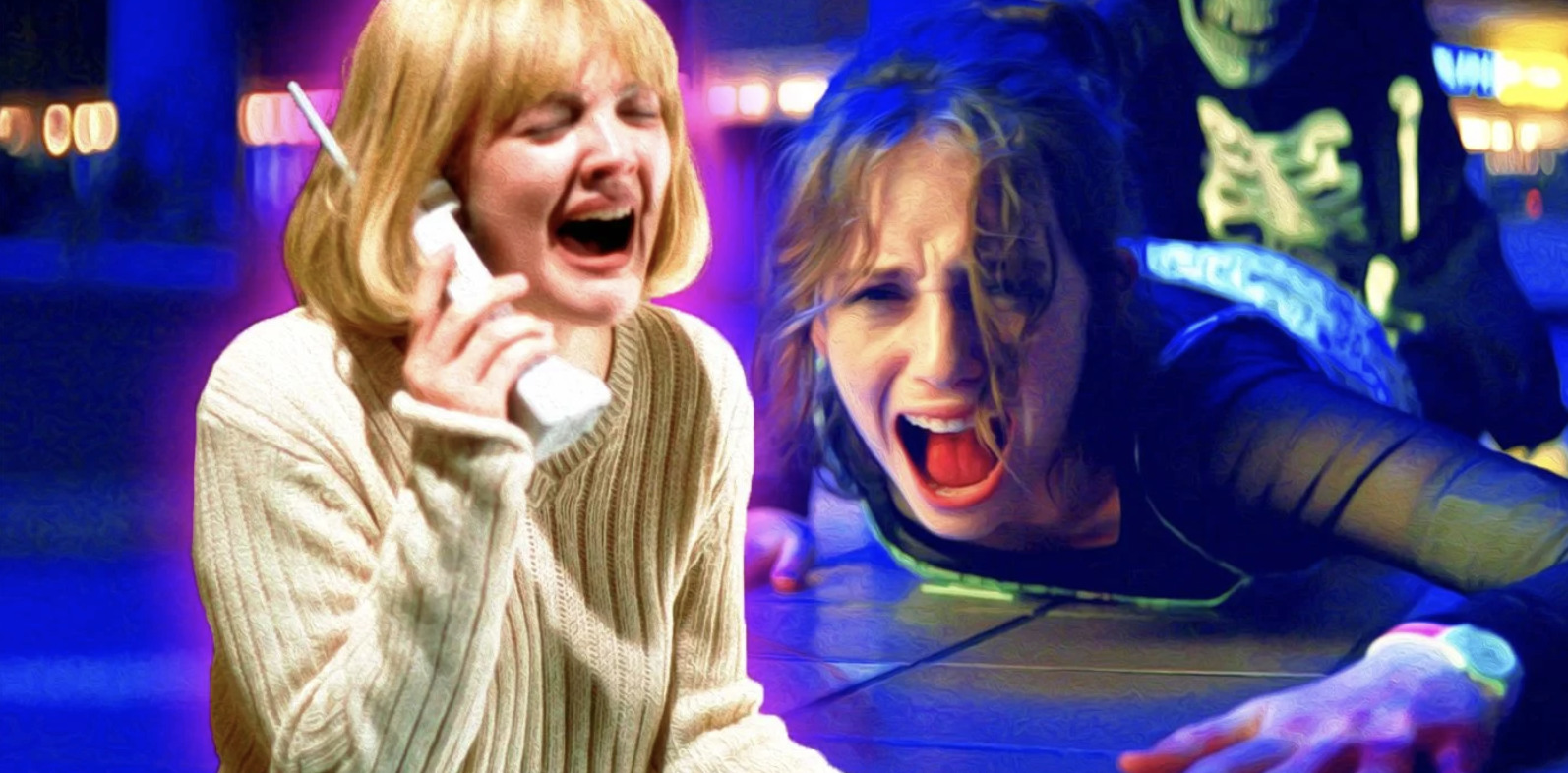
When I was ten years old, the Goosebumps series ruled my life. As soon as I finished one book, I would open another which eventually led to the Fear Street Series, written by R. L. Stine as well. The series was a step-up from Goosebumps in terms of maturity, but also provided a deeper form of storytelling that spanned many generations. Since Goosebumps ended up as a min-series in the 90s inevitably, the Fear Street Series would eventually venture onto our screens. In July 2021, Netflix released Part 1 of a trilogy titled Fear Street 1994.
My inner child squealed with excitement. Horror is my favorite genre in both films and books. Nostalgia can often give us exceedingly high expectations though, and I found myself filled with nostalgia during the opening scene. It wasn’t the books or the feelings I had in the nineties reading R. L. Stine. The opening scene was a complete rip-off of the opening to the original Scream. This realization did not hit me immediately, because I sincerely wanted to enjoy the movie and trilogy. But everything from the chase scene to the killer stalking Maya Hawke’s character in the same method as Ghostface? I was deeply disappointed.
I believe in homages, but there’s a proper way to borrow a creative idea instead of making it appear as if you hit the copy and paste button. Without exposition, explanation, or any context they thrust us into a psycho-killer scene in which the killer seems to be more than human, and they subject us to gratuitous violence. This may not seem like a serious consequence, but by the time that Heather (Maya Hawke) was killed, not only did I not care- but wanted to put Scream on instead. If Netflix had wanted to open with a bang, such as with Scream, they should have cast a different actress in this small but pivotal role. Who? One that holds a presence beyond what we know about her, so when without context her character is murdered? We care, therefore we remain invested in the story.

Following the opening, you’re bombarded with images and newspaper clippings for the opening credits. A cheap and easy method in which the audience is supposed to formulate some understanding of the rules of this world. Whether you can put together the puzzle pieces or not, following the introduction they introduce you to two new characters that are somehow supposed to be related.

Seriously? We are supposed to believe that these two actors are related? I cannot even begin to diagnose or address the issue of colorism here. I could easily have overlooked this issue if the actress playing the lead of Deena was A) Talented and B) Had chemistry with at minimum the actor playing her brother. Neither was the case.
Evidently, Netflix is still hesitant to cast a dark-skinned Black actress in the role of a Black character. If you’re going to change the race of a character (I believe in the book Deena was Caucasian) to black you should cast someone who is that race or provide some type of explanation why the siblings look vastly different. In rare circumstances do siblings have vastly different skin tones– there is usually an explanation. But explanation was scant, and soon enough, you’re being subjected to stereotypes and tropes. Deena is written as an angry, lovesick and generally unlikeable girl (way to strive for diversity) living in a world where magic, spells and witchcraft run rampant. The general teenage population is super-aggressive beyond the normal bullying- with, like everything else- we are given no context.
Deena’s love interest (Samantha) by no coincidence was white. So were her brothers. As per usual, in a place where black people exist and deserve a space in a story, there was given as little space as possible even when the main character was supposed to be Black. The absence of Black women of any age was astounding. Not one friend, not one relative, and not even another high school student did I catch that was a black female. Once again, Netflix seemed to think that the multi-racial actress being used as a substitute for a black character would suffice.
In Stephen King’s IT, which is highly fantastical and full of impossible scenarios, we are given both context and explanation (over time) in both film adaptations that provide a gateway to the world we are witnessing. Therefore, when an evil clown shows up to murder children, we somewhat understand why, or why it is a possibility. This never happened in Part 1 of the Fear Street series. Someone constantly leaped to conclusions without proper set-up or any understanding of how a character or characters could draw said conclusions. For example, when all characters are in the local hospital, Deena somehow manages to not only steal a police officer’s gun but shoots it. How would Deena know how to steal a gun from a conscious police officer? When and where did she learn to shoot? These are questions that are never answered.
The biggest question that remained by the time I realized how disappointed I was is this: Where are the parents!? Not one parent appeared on screen, except Samantha’s mother showing up one time. Yet, with all the life-threatening events taking place without supernatural interference, not one adult who was responsible for any of the characters made an appearance. I could have justified this the same as in IT, because the town was caught in the fog of not only grief of losing so many children, but the evil that consumed the town. Other than that, we are never told if they’re working, traveling or the kids are emancipated which would be the best answer, all things considered.
For the relationship of Deena and Samantha, there was zero chemistry, and I often wondered if they were playing siblings or a broken-up couple. It was strange and too many scenes of these two characters together were them yelling back and forth, which did not move the story forward nor contribute to character development. This was another failed attempt at giving the audience a real backstory. In the same scene, there was one small comment about Samantha moving 30-minutes away. If this were the legitimate reason Deena broke up with Samantha, all it meant was that Deena was even more unlikeable than I originally thought she could be. They sprinkled the rest of the episode with pointless scenes, zero context, and a plot wasted that should have been thrilling.
I cannot advise whether Part Two and Part Three which are now steaming as well, should be given the same chance. Most likely, anyone is better off simply reading the books. Or just put on Scream.

Comments